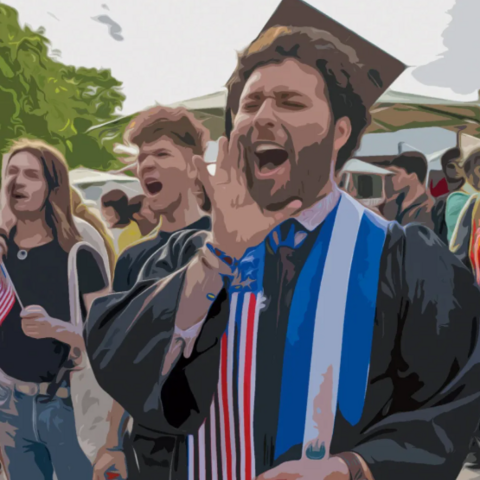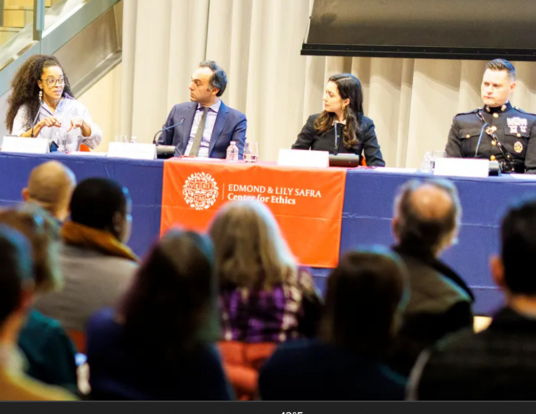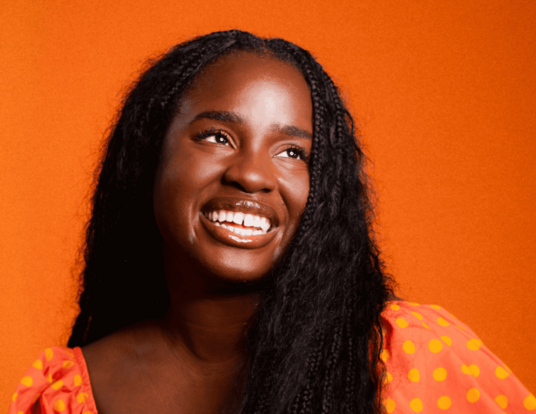A Passion for Science, A Concern for Community
Through DNA analysis and advocacy, Roslyn Curry hopes to reconnect communities of color to lost ancestors
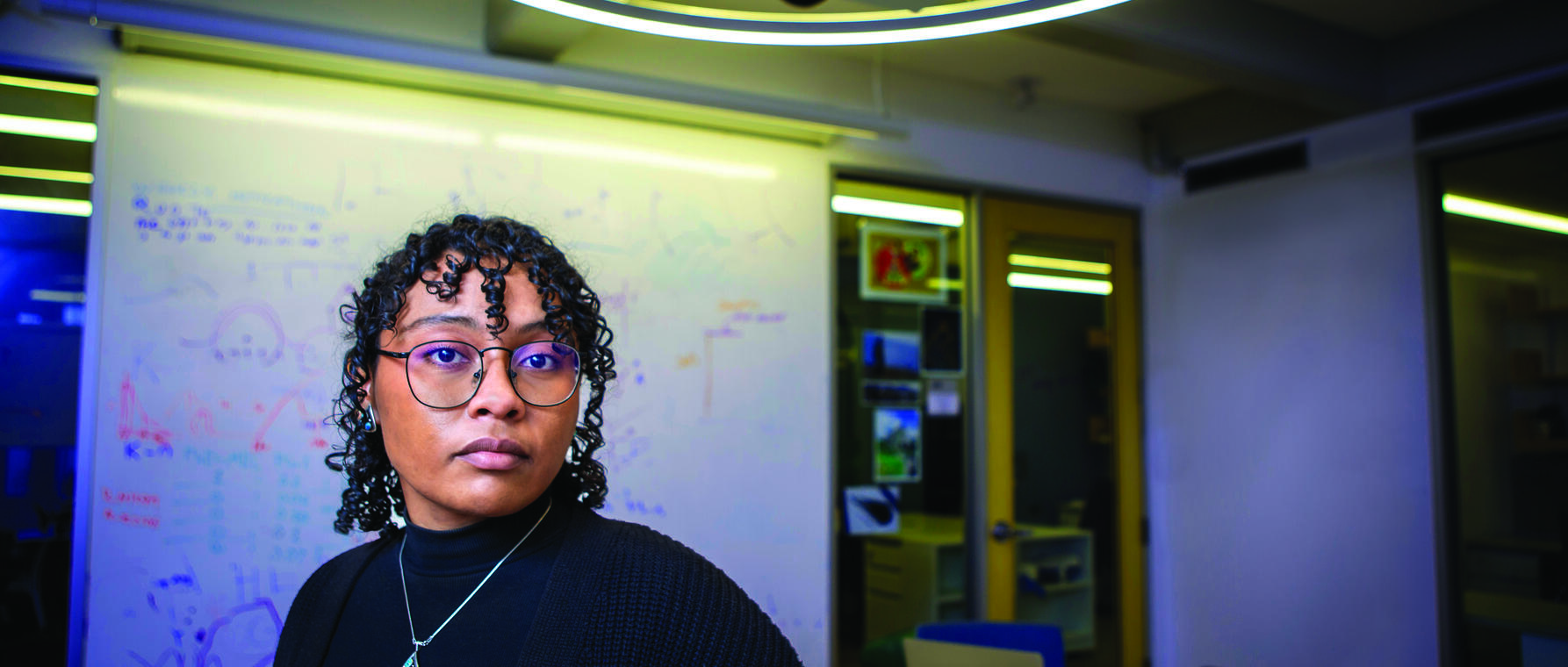
Visit Roslyn Curry’s Harvard web page and you immediately get a sense of how central her background is to her identity. Shí éí Roslyn Curry yinishyé, the page reads in the Diné language. Tábąąhá nishłį́, Naahiłii bashishchiin, Yé’ii dine’é Táchii’nii dashicheii, Naahiłii dashinalí. Kʼaiʼbiiʼtó déé’ naashá. Ákót’éego Diné asdzáán nishłį́.
Translation: “My name is Roslyn Curry. I am Edgewater born for African American. My maternal grandfathers are the Giant People of the Red Streak Running into Water clan, and my paternal grandfathers are African American. I am from Kaibeto, Arizona. This is how I introduce myself as a Navajo woman.”
“I value my culture,” she says. “The greeting is very representative of who I am, where I’m from, and how I grew up.”
As a PhD student in human evolutionary biology at the Harvard Kenneth C. Griffin Graduate School of Arts and Sciences (GSAS), Curry combines her connection to the communities from which she comes with a passion for science. Through genetic research and analysis, she works to address health inequities, help heal the wounds of colonialism and slavery, and recover histories long lost to Indigenous and Black Americans.
Characterizing a Killer
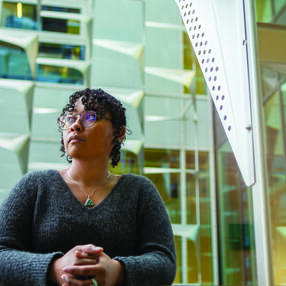
The first in her family to graduate from a four-year college, Curry spent her undergraduate years at the University of Arizona (UA), where she participated in several research programs and became fascinated with life science. Through the Partnership for Native American Cancer Prevention and the university’s Postbaccalaureate Research Education Program, Curry joined the lab of William Montfort, a professor in UA’s Department of Chemistry and Biochemistry. Montfort’s group studies the structure and function of proteins—particularly the role of the signaling molecule nitric oxide (NO) in heart disease and cancer. Curry was part of the group’s efforts to understand how NO interacts with soluble guanylyl cyclase (sGC), a protein that behaves like a receptor for the molecule. When NO binds to one end of sGC, it causes a change or activation at the other end that ultimately causes blood vessels to relax and expand. It may also help with forming memories in the brain.
“We had Roslyn work on the role of NO in a particularly aggressive form of cancer: triple-negative breast cancer, which strikes earlier and more aggressively in indigenous women,” Montfort says. “She helped purify and characterize the sGC protein to understand its structure and properties. The work provided a detailed description of how a central coil-shaped part of sGC, the coiled-coil signaling helix, rearranges and repacks itself during the activation process.”
The research also provided Curry with her first coauthor credit on a scientific study published in a 2019 issue of the journal Protein Science. She continued to study nitric oxide, exploring changes in cells with high NO and their links to the progression of cancerous tumors. As she began thinking about the next steps in her career, she decided to combine her interest in the genetic characterization of disease with her concern for Indigenous and Black populations. “I encouraged Roslyn to find a home for such studies and join the field,” Montfort says. “This led to research work at Harvard, and now graduate studies in human evolutionary biology. I couldn’t be more pleased for her.”
Finding Lost Ancestors
Montfort connected Curry with David Reich, professor of human evolutionary biology at Harvard’s Faculty of Arts and Sciences and of genetics at Harvard Medical School. Curry joined the Reich lab as a participant in Harvard Griffin GSAS’s Research Scholars Initiative, a nondegree-granting postbaccalaureate program that provides mentored research and training for individuals interested in pursuing doctoral studies and that strongly encourages applications from students from groups underrepresented in the academy.
Before she did, though, Curry spent three months interning at 23andMe, a biotechnology company that provides direct-to-consumer DNA testing services. There she worked with Éadaoin Harney, PhD ’20, on a project that analyzed the DNA of enslaved and free African Americans who worked at the Catoctin Iron Furnace in Maryland during the nineteenth century. Harney says the Catoctin study was the first of its kind to search for direct connections between historical and present-day individuals using genetic data from research participants in a direct-to-consumer genetic database.
“At 23andMe, we combined ancient-DNA research techniques with the company’s genetic database to tell stories about the African American community at Catoctin,” Harney says. “Through a collaboration between my team, Professor David Reich’s group at Harvard, and the Smithsonian’s National Museum of Natural History, we uncovered a lot of information that was not in the historical record: connections within the community, such as mothers and children; connections with people living today through a common ancestor; and even connections with people living today whom we believe may be direct descendants.”
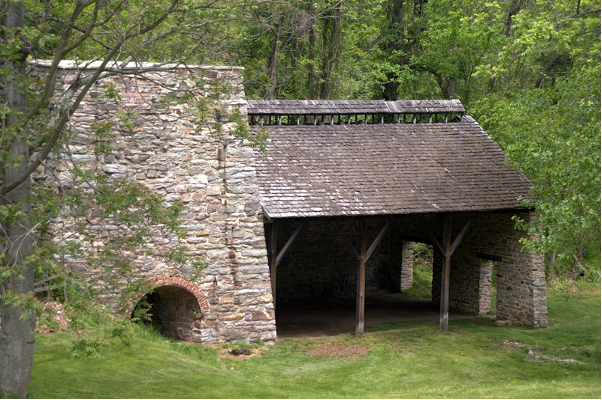
During her 23andMe internship, Curry wrote “Ethics and the Study of Historic DNA of African Americans Buried at the Catoctin Furnace,” an overview of the project that addressed questions and concerns those from a variety of backgrounds might have about the work. The product of internal interviews Curry conducted with the project, the overview posted on the 23andMe blog simultaneously with the Catoctin study’s publication in the journal Science.
“During her internship, Roslyn demonstrated a particular interest in the ethical considerations associated with the project,” Harney says. “She continued to be involved in these discussions after she joined the Reich Lab.”
Curry joined Harney and five other members of the Harvard and 23andMe teams in producing an ethics paper that accompanied the Catoctin Iron Furnace study, bringing a different perspective to the editing process and to the group’s concerns. “On the Catoctin project, I helped advocate for those from traditionally marginalized communities and get them the information they were interested in,” Curry says. “I worked with my colleagues to ensure that the research happened respectfully. I was able to explain to a wider audience what the study was about and how it was done. The experience showed me that I can be a researcher who is helpful, not harmful, to those I want to serve.”
I worked with my colleagues to ensure that the [Catoctin] research happened respectfully . . . The experience showed me that I can be a researcher who is helpful, not harmful, to those I want to serve.
—Roslyn Curry
Margaret Briehl, a professor at UA College of Medicine and director of the research training programs in which Curry participated, says her former student’s work matters because the histories of Black and Indigenous Americans have mostly been filtered through the perspectives of the dominant white culture.
“It’s very important to have history also told by the Native Americans and African Americans themselves,” Briehl says. Moreover, genetic studies must be done in collaboration with the communities being studied. “This type of research, in particular, raises concerns with American Indians,” she continues. “Currently, genetic studies on American Indians are banned by most and maybe all of the nations and tribes in Arizona due to the disrespectful research conducted on peoples of the Havasupai tribe earlier this century. Roslyn’s work in this area could make a difference.”
To Forge a Healthier Future
Still in the early years of her PhD program, Curry’s research focuses on the statistical and computational analysis of genetic data from ancient people who lived in the Maya region of Central America, northwest Mexico, and colonial-era North America. She also works on statistical analysis of DNA data from ancient populations in the territory of what is now the United States—including from her own region of the Southwest. Reich, her doctoral advisor, says Curry brings to his group an intense interest in how genetic data can be used to learn about human history and biological change over time in Indigenous and African Americans.
“Compelling research on the genetic history of these populations demands a unique combination of skill and sensitivity,” Reich says. “Roslyn is rapidly mastering high-powered computational techniques, which she brings to bear on ancient DNA data in a scientifically rigorous way. Roslyn is equally rigorous when it comes to the ethical issues and community engagement imperatives that arise when analyzing genetic information from communities that have been marginalized.”
Currently, genetic studies on American Indians are banned by most and maybe all of the nations and tribes in Arizona due to the disrespectful research conducted on peoples of the Havasupai tribe earlier this century. Roslyn’s work in this area could make a difference.
—Dr. Margaret Briehl, University of Arizona College of Medicine
At this point in her career, Curry says she’s focused on “becoming the best-trained scientist I can be.” As an Indigenous woman as well as a geneticist, however, she feels a responsibility to use science respectfully to restore what has been taken from those who have historically been marginalized and improve their well-being going forward.
“Genetic ancestry isn’t a replacement for traditional knowledge via oral storytelling—and certainly doesn’t replace one’s sense of self or identity, whether as a part of a tribe or some other community,” Curry says. “Also, looking at ancient DNA isn’t a direct way to find out who someone’s ancestors were. But it can provide some idea of where people come from. By recovering obscured family lines and gaining novel biological insights, I hope to reconnect people to their past—and forge a healthier future for Indigenous people and communities of color.”
Get the Latest Updates
Join Our Newsletter
Subscribe to Colloquy Podcast
Simplecast


